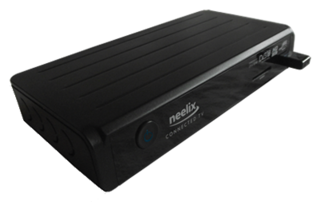
Java is a general-purpose computer-programming language that is concurrent, class-based, object-oriented,and specifically designed to have as few implementation dependencies as possible. It is intended to let application developers "write once, run anywhere" (WORA), meaning that compiled Java code can run on all platforms that support Java without the need for recompilation. Java applications are typically compiled to "bytecode" that can run on any Java virtual machine (JVM) regardless of the underlying computer architecture. The language derives much of its original features from SmallTalk, with a syntax similar to C and C++, but it has fewer low-level facilities than either of them. As of 2018, Java was according to Github one of the most popular programming languages in use, particularly for client-server web applications, with a reported 9 million developers.
Java Platform, Micro Edition or Java ME is a computing platform for development and deployment of portable code for embedded and mobile devices. Java ME was formerly known as Java 2 Platform, Micro Edition or J2ME.
Java Platform, Standard Edition is a computing platform for development and deployment of portable code for desktop and server environments. Java SE was formerly known as Java 2 Platform, Standard Edition (J2SE).

A Java servlet is a Java software component that extends the capabilities of a server. Although servlets can respond to any types of requests, they most commonly implement web containers for hosting web applications on web servers and thus qualify as a server-side servlet web API. Such web servlets are the Java counterpart to other dynamic web content technologies such as PHP and ASP.NET.

Swing is a GUI widget toolkit for Java. It is part of Oracle's Java Foundation Classes (JFC) – an API for providing a graphical user interface (GUI) for Java programs.
The Connected Device Configuration (CDC) is a specification of a framework for Java ME applications describing the basic set of libraries and virtual-machine features that must be present in an implementation. The CDC is combined with one or more profiles to give developers a platform for building applications on embedded devices ranging from pagers up to set-top boxes. The CDC was developed under the Java Community Process as JSR 36 and JSR 218.
The Connected Limited Device Configuration (CLDC) is a specification of a framework for Java ME applications describing the basic set of libraries and virtual-machine features that must be present in an implementation. The CLDC is combined with one or more profiles to give developers a platform for building applications on embedded devices with very limited resources such as pagers and mobile phones. The CLDC was developed under the Java Community Process as JSR 30 and JSR 139.
The event dispatching thread (EDT) is a background thread used in Java to process events from the Abstract Window Toolkit (AWT) graphical user interface event queue. It is an example of the generic concept of event-driven programming, that is popular in many other contexts than Java, for example, web browsers, or web servers.
In computing, Java Web Start is a framework developed by Sun Microsystems that allows users to start application software for the Java Platform directly from the Internet using a web browser. Some key benefits of this technology include seamless version updating for globally distributed applications and greater control of memory allocation to the Java virtual machine.
The Visual Component Framework (VCF) is an abandoned open source project for development under Microsoft Windows and Apple Macintosh that is distributed under the BSD license. It is an advanced C++ application framework that makes it easier to produce GUI-based C++ applications. The framework is C++ design and has built in support for rapid application development. The framework is designed to be portable over multiple platforms and compilers.
In the Java computer programming language, an annotation is a form of syntactic metadata that can be added to Java source code. Classes, methods, variables, parameters and packages may be annotated. Like Javadoc tags, Java annotations can be read from source files. Unlike Javadoc tags, Java annotations can also be embedded in and read from class files generated by the compiler. This allows annotations to be retained by Java VM at run-time and read via reflection. It is possible to create meta-annotations out of the existing ones in Java.
The Java Class Library (JCL) is a set of dynamically loadable libraries that Java applications can call at run time. Because the Java Platform is not dependent on a specific operating system, applications cannot rely on any of the platform-native libraries. Instead, the Java Platform provides a comprehensive set of standard class libraries, containing the functions common to modern operating systems.
In computer programming, JavaBeans Activation Framework, or JAF, enables developers to:
The Java Development Kit (JDK) is an implementation of either one of the Java Platform, Standard Edition, Java Platform, Enterprise Edition, or Java Platform, Micro Edition platforms released by Oracle Corporation in the form of a binary product aimed at Java developers on Solaris, Linux, macOS or Windows. The JDK includes a private JVM and a few other resources to finish the development of a Java Application. Since the introduction of the Java platform, it has been by far the most widely used Software Development Kit (SDK). On 17 November 2006, Sun announced that they would release it under the GNU General Public License (GPL), thus making it free software. This happened in large part on 8 May 2007, when Sun contributed the source code to the OpenJDK.






